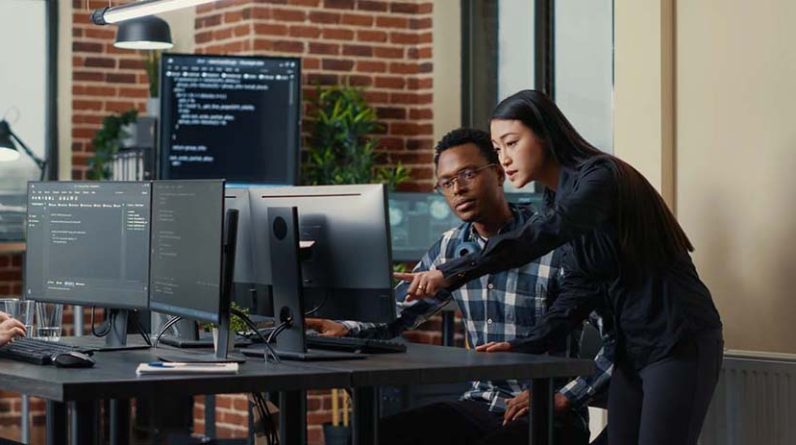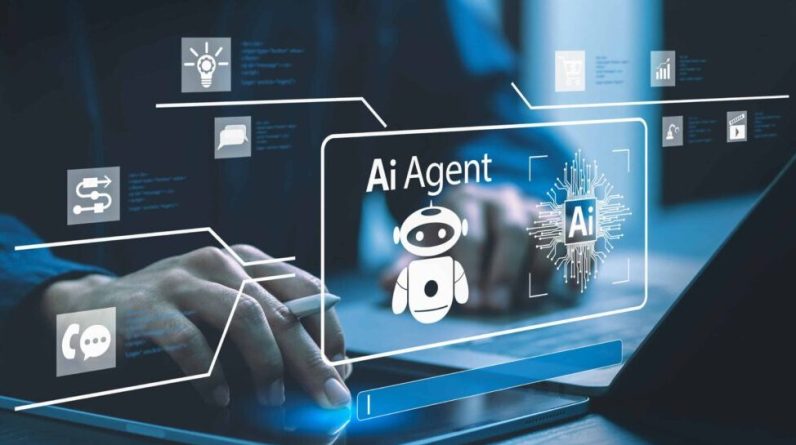
Artificial intelligence might be a new concept to the average Northeast Pennsylvania resident, but its history actually goes back decades. In part one of NEP-AI, business owners, educators and physicians will discuss their professional backgrounds, their history with technology and the dawn of artificial intelligence.
VizVibe
Kevin Jones is the co-founder and CEO of VizVibe, an augmented reality (AR) platform company that specializes in interactive content and media. He’s also a professor of communication arts at Luzerne County Community College. And to top off his list of titles, he’s been called a “local AI expert.”
Jones’ specialty might be more appropriately filed under AR than AI, but his historical perspective on both fields is valuable. He said that the dawn of AR came back in the 1960s, and it didn’t take long for AI technology to follow.
“AI has been around for years,” Jones said, in contrast to the popular belief that AI is a “new” technology.
Almost immediately, a question emerges: What is AI? Thankfully, Jones had an answer for that as well.
“AI is data. It’s information.”
Artificial intelligence, by Jones’ definition and understanding, can be used for a vast amount of tasks in day-to-day life. He used the development of a shopping list as an example. If someone has a habit of forgetting to put eggs on their shopping list, an AI tool can help balance out the kinks in human memory, especially when that memory shows consistent faults over time.
If a user is able to properly identify those kinks and feed that information into an AI tool, the tool can use that data and fill in the gaps.
“AI works on the data you give it, and data is just everything you always do,” said Jones.
Jones is a progressive in terms of his appreciation for artificial intelligence in the ever-expanding galaxy of technology. But he cautions those who respond to these new technologies with fear to take a step back. He recalled another technology once deemed insufficient.
“I once had a professor tell me that 3D printing was a passing fad, and it was a waste of time to even consider teaching anything with 3D printing, because it was worthless,” Jones explained.
Per Future Business Insights, “the global 3D printing market size was valued at USD 22.39 billion in 2023.” Needless to say, that take didn’t age well.
Fidbak
Julio Pertuz played professional soccer in Europe, and later came to the United States. All the while, he’s been dedicated to coaching and training players to be the best they can be.
“What I do is teach the techniques,” said Pertuz.
He developed training videos over the years and would send training tips to players informally. As Pertuz began planning for the next phases of his business aspirations, he asked himself a question: “Is there a market out there for feedback?”
In the world of AI, feedback is everything, but Pertuz was unsure of its place in sports training. So, he created Fidbak, a soccer training app, to test the waters. The use of AI technology at Fidbak is a story that is still being written.
Wilkes University
In academic settings, there are few subjects more likely to cause a professor to cringe than artificial intelligence. In Luzerne County, the faculty members at Wilkes University are on the frontlines of navigating the latest wave of AI, including tools like ChatGPT, which can write a whole essay with just the laziest prompting.
“We’re very fortunate here to have a large number of faculty that are very, very involved and concerned with [artificial intelligence],” said Dr. Del Lucent, associate professor of physics in the department of mathematics and computer science at Wilkes.
Lucent pointed to the writing-intensive infrastructure on campus, such as the English department and the writing center, as being particularly concerned with AI’s potential.
But the perspectives on AI’s capabilities within the faculty differ. Some, such as Dr. Evene Estwick, chair and associate professor of communication and media studies, believe a more patient approach is in order. To perceive where AI might be headed, there might be value in looking to previous technologies for clues.
“It behaves like technologies that we’ve seen before, so we anticipate and expect that it’ll take us some time to figure out how we’re going to use it,” said Estwick.
Eric Ruggiero, chair of integrative media, art and design at Wilkes, is a 30-year veteran of academia, so he can offer some of the perspective Estwick is referring to. He’s had his finger on the pulse of technology since the onset of VHS tapes, and he implied that the closest ancestor to modern artificial intelligence graphics, at least in his field, are stock images.
“It’s just the next generation of content, and the way that content is housed or curated,” said Ruggiero.
The professors seem to be in agreement when it comes to AI’s usefulness and convenience. As a graduate school colleague of Lucent once said, not necessarily in reference to AI, “It’s a substitute for time, not understanding.”
Geisinger
Dr. Clemens Schirmer is the vice chair and a professor in the neurosurgery department, the program director of the Geisinger Neurosurgery Residency, and oversees the interventional stroke ecosystem, at Geisinger Wyoming Valley Medical Center.
Schirmer described himself as “probably a total zealot for technology,” and that description makes a lot of sense on the professional level. He offered some context for the long relationship between his field, neurosurgery and technology, pointing to developments like big imaging machines, neuronavigation and implants.
As a student in Germany and the United States, Schirmer became familiar with the technology that set the stage for modern artificial intelligence and its use in neurosurgery.
“The basic principles of what we’re doing these days are actually relatively old. This goes back to the 1960s, 1970s. I have worked with these types of algorithms when I was a Master’s student,” said Schirmer. “What we were lacking back then is, essentially, the computing power to actually make this happen on a somewhat practical basis.”
The computing power Schirmer referenced now exists, and Geisinger has been interested in implementing the artificial intelligence that comes with it for years. Geisinger first used AI to cycle through “blood on head” images. When an image was detected as having an issue, it would be brought to the forefront, bringing along with it an urgency that, otherwise, wouldn’t be possible.
“Whenever [the AI] would positively alert, we’d kick that [image] to the top of the queue, so we’d make sure that a radiologist would then look at it in a couple of seconds, rather than tens of minutes,” Schirmer said.
When the COVID-19 pandemic shocked the health care system, the implementation of AI technology at Geisinger slowed. But in regards to Geisinger’s capabilities to use AI, and the technology’s overall expansion, things remained at full throttle through the pandemic.
The Wright Center
Dr. Jignesh Sheth, M.D., FACP, MPH, is the chief medical and information officer and the senior vice president at The Wright Center for Community Health and Graduate Medical Education. He’s been at the Wright Center for about 20 years.
Sheth said that the Wright Center’s implementation of artificial intelligence is extensive, comparing it to the internet in terms of its usefulness in getting work done. He also noted that artificial intelligence, at a more granular level, is rather old and simple.
“Artificial intelligence is a technology that existed long before it was called AI,” said Sheth. “I see AI as nothing but automation of repeated tasks that happen in our daily life, whether in health care, or in administration, or any other facet of life.”
In health care, Sheth said that automated precursors to AI, such as an electronic health record, have been important pieces of the medical field’s operations for some time. He called those early automation efforts the “grassroots” of using artificial intelligence.
In the recent past, the Wright Center introduced an automated “smart bot” called Neo, which could answer patient questions without bogging down human workers with phone calls. Neo’s responses were monitored on the backend by employees, introducing a collaborative — and convenient — relief to the workday.
“It’s hard to find qualified people to answer those phone calls. It’s hard to provide responses to our patients, and we have grown significantly since COVID,” said Sheth. “So our need for operators went up, our supply of qualified employees went down. Hence, we moved to technology, not to replace people, but to take care of those tedious tasks, which can be handled at automation level.”
The results brought on by the Wright Center’s automation efforts, including Neo, have appeared in more ways than one.
“Not only does it increase patient satisfaction — it also increases employee satisfaction,” said Sheth.






